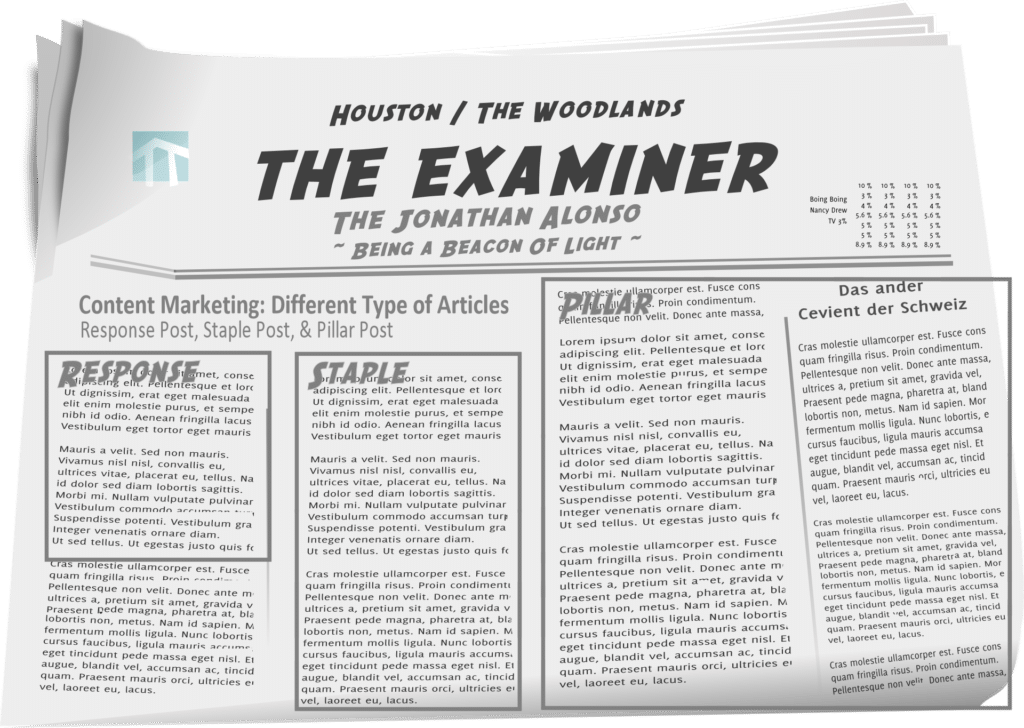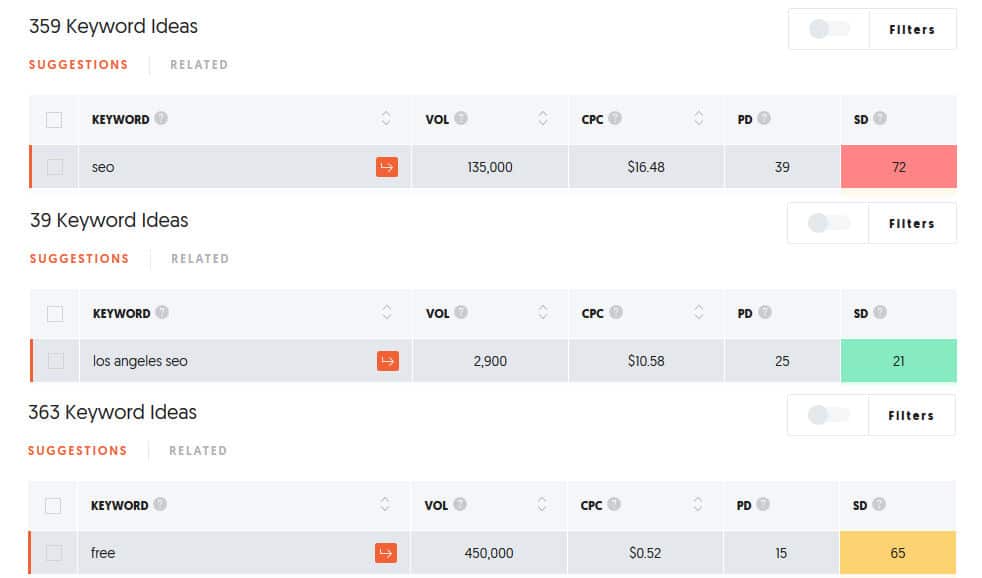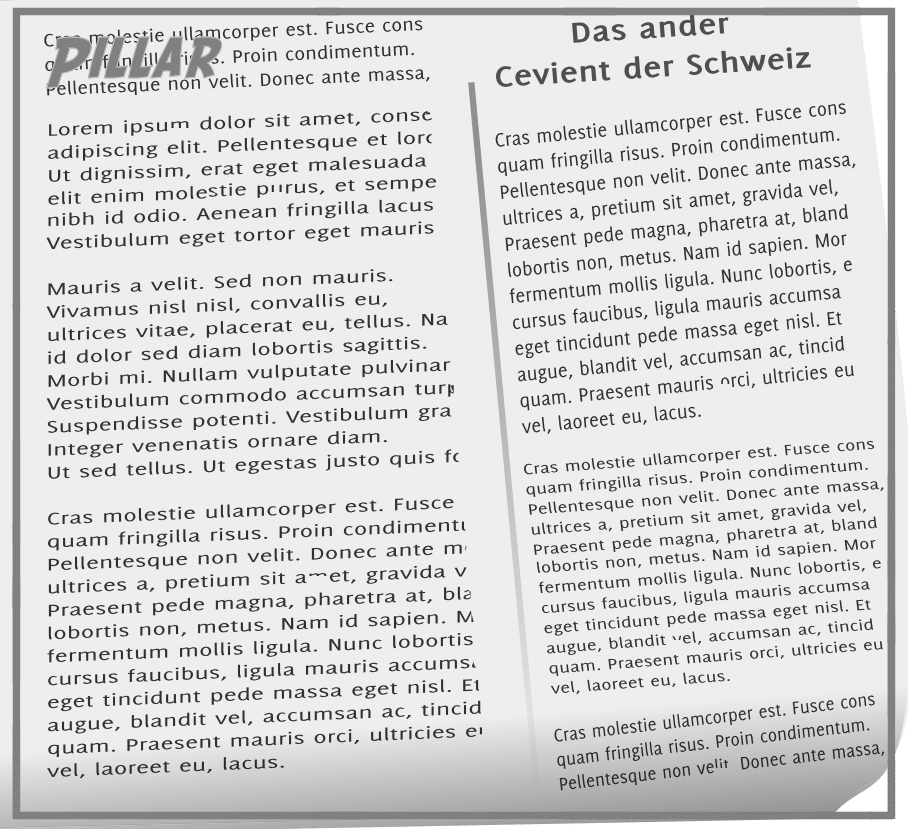Are you tired of traditional marketing methods that no longer yield effective results? It’s time to embrace the power of content marketing. In this article, we’ll recap what content marketing is and why it has become the go-to methodology for businesses looking to attract and retain profitable customers. Learn about the different types of blog posts, including Response, Pillar, and Staple, and how to choose the proper length for your articles. We’ll also delve into how incorporating keywords can impact your content’s success in driving traffic to your website and converting future prospects into loyal customers. Don’t miss out on the benefits of content marketing – read on to enhance your strategy today!
The Importance of Word Count in Blog Writing
When it comes to blogging, the length of your article, or word count, is often a hotly debated topic among writers. While it’s important to consider the optimal word count for your blog, it should never come at the expense of writing quality content.
Before you even start thinking about word count, it’s crucial to define the main purpose of your article. There are typically three main objectives for writing blog posts:
- Creating internal and external SEO links to boost your website’s page rank and appear in the top ten search engine results.
- Attracting readers who will engage with your content and convert into subscribers.
- Getting your article published on multiple webmasters’ websites to increase its reach.
 Once you have established your primary goal, you can then consider the appropriate length for your article. While there is no one-size-fits-all answer to the question of ideal blog length, it’s generally recommended to aim for at least 300 words to provide enough substance for readers and search engines alike.
Once you have established your primary goal, you can then consider the appropriate length for your article. While there is no one-size-fits-all answer to the question of ideal blog length, it’s generally recommended to aim for at least 300 words to provide enough substance for readers and search engines alike.
However, keep in mind that longer articles can provide more comprehensive information and may lead to higher engagement rates. Ultimately, the key is to strike a balance between quantity and quality and focus on producing high-quality content that achieves your objectives.
The Power of Writing for SEO Backlinks: How to Boost Your Website’s Ranking
Writing for another website, also known as guest posting, can be an effective way to gain web validation and build valuable backlinks. These links from reputable third-party sites to your own act as social confirmation that your content is valuable and trustworthy. In return, the host site gets fresh content and offers a link to your site. The more backlinks you create, the more votes Google sees to rank your site higher.
However, if your goal is to purely create backlinks, the acceptable length of your article can vary. It depends on the guest posting requirements and the niche you’re writing for. As of 2023, many news outlets are not accepting anything less than 500 to 750 words, and some sites expect nothing less than 750 to 1000 words. But remember, quality is key. Each article must be unique, as Google despises duplicate content. Avoid deceptive practices that can get your site removed from search engine results. Guest posting takes time, but the results are worth it. To check for duplicate content, use tools like SiteLiner or CopyScape. Start writing today and boost your website’s ranking!
(Suggestion: To check for duplicate content on the web and within your site, I suggest using SiteLiner or CopyScape – Links found on my SEO Resource Page).
Effective Article Writing to Drive Traffic
Are you looking to attract real human readers to your website and build your email list? Then your articles should be informative and engaging, providing value to your readers and giving them a glimpse of who you are. To achieve this, aim for an article length between 750 to 1000 words, or even up to 1200 words for more in-depth topics. Before starting to write, research and identify the keywords that align with your article’s purpose. Then, craft a well-written piece that caters to the end-users’ needs and interests, while also satisfying Google’s ranking criteria. With the right approach, your articles can help you drive traffic and grow your online presence.
The Perfect Article Length: How Many Words Should Your Content Have?
As a content creator, you might be wondering how long your article should be. While there’s no one-size-fits-all answer, there are some principles you can follow. With the rise of digital media, people have shorter attention spans and more distractions online. So, it’s best to keep things short and sweet.
For a short article, aim for around 500 words. This is enough to convey your message without overwhelming your readers. Breaking your article into 2 or 3 sections with subheadings can make it easier for readers to follow and retain information.
If your topic requires more depth, don’t go beyond 1,000 words for each topic or subheading. For longer articles, consider writing around 700-900 words for each subheading. It’s surprising how much information you can cover in this word count.
Remember, readers are more likely to engage with content that’s concise and easy to read. By keeping your articles short and well-organized, you’ll be able to capture their attention and deliver your message effectively.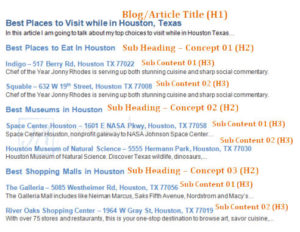
How to Write the Perfect Article Length for Google and Your Readers
As a content writer, finding the ideal word count for your articles can be a tricky balance. Google wants long-form, high-quality content, while your readers want concise, helpful information. To satisfy both, your article should solve a problem and offer value while keeping readers engaged.
In the past, short articles were the norm, but as Google has evolved, so has the ideal word count. While 250+ words used to suffice, today’s readers demand more in-depth content to keep them on your site. An article that’s too short can leave readers unsatisfied and prompt them to click the back button, forgetting they ever visited your site.
At the same time, overly long articles can overwhelm readers and cause them to lose interest. The key is to find a happy medium that provides valuable information while keeping readers engaged. So, what is the ideal word count for your article? Read on to find out.
Although long articles have their advantages, they can also be overwhelming for someone seeking a quick answer. It’s frustrating to have to sift through a thousand words when a concise 15 to 20 words would suffice. The key to effective content marketing is to strike a balance between providing direct answers to visitors’ questions and offering deeper resources for those who want to explore the topic further. Use subheadings to make it easy for readers to consume information while also delving deeper into the topic. Each subheading should be tailored to answering questions that users may be looking for, but all relate to the main topic. By doing this, you offer additional relevant information that strengthens your main keyword, reduces bounce rates, and increases visitor duration. For example, the subheadings in an article on ‘The Best Places To Visit In Houston’ could include sections on restaurants, museums, and shopping malls, catering to different interests within the main topic.
How the Length of Your Blog Post Affects Keyword Difficulty and SEO
In today’s digital age, creating high-quality content is crucial to rank higher on Google search results. According to recent research studies, longer-form blog posts tend to have higher rankings in Google’s algorithm compared to shorter posts. If you’re targeting a specific keyword like ‘Houston WordPress’, it’s important to conduct thorough SEO research on Google’s first page results to determine the optimal length for your blog post. By analyzing the number of words used in each website’s content for your exact keyword phrase, you can tailor your blog post length to match or exceed the top-performing pages. Don’t let your content get buried in search results, optimize your post length for better keyword difficulty and higher SEO rankings.
- Site 01 – Word Count: 1,675
- Site 02 – Word Count: 1,237
- Site 03 – Word Count: 686
- Site 04 – Word Count: 366
- Site 05 – Word Count: 528
- Site 06 – Word Count: 832
- Site 07 – Word Count: 765
- Site 08 – Word Count: 451
- Site 09 – Word Count: 225
- Site 10 – Word Count: 388
After analyzing the search results, it’s clear that aiming for at least 1,675 words in your article would give you a better chance of ranking on the first page. This strategy can be applied to other keywords as well, as you start to recognize patterns in the search results. Ultimately, trust your instincts and use your best judgment to create content that resonates with your audience and satisfies their search intent. By consistently producing high-quality, comprehensive articles, you’ll improve your chances of achieving a top-ranking position on search engine results pages.
Mastering the Three Essential Types of Blog Posts: Response, Staple, and Pillar
Blogging is an art that requires patience, creativity, and most importantly, skill. As a content marketer, your blog is the centerpiece of your strategy, and you need to ensure that it delivers the results you desire. That’s why understanding the three fundamental types of blog posts is crucial. The Response Post, the Staple Post, and the Pillar Post are each designed to achieve specific results and help establish your website’s niche and theme with Google. Originally part of a 30, 60, or 90-day post challenge, these blog types have become a cornerstone of successful content marketing. In this post, we’ll provide you with a brief overview of each type and explain how they can help you achieve your content marketing goals.
Why Shorter Blog Posts Can Be Just as Effective
Many people believe that blog posts should be at least 500 words long in order to provide value to readers. While this can be good advice, it’s important to remember that the most important thing is providing valuable content, no matter the length.
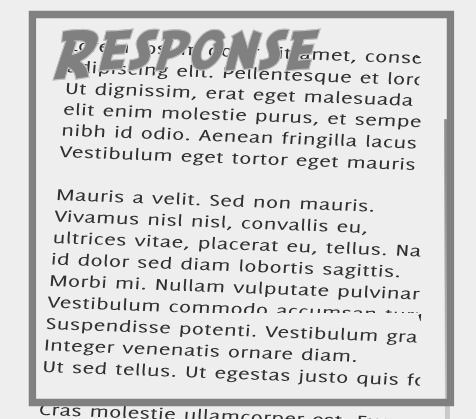 So what happens when you have a small update to share and it’s impossible to reach 500 words? Should you wait until you have more to say? The answer is no. Take a cue from marketing guru Seth Godin, who often publishes blog posts between 60 and 200 words, yet still manages to provide valuable insights to his readers.
So what happens when you have a small update to share and it’s impossible to reach 500 words? Should you wait until you have more to say? The answer is no. Take a cue from marketing guru Seth Godin, who often publishes blog posts between 60 and 200 words, yet still manages to provide valuable insights to his readers.
If you do decide to write a shorter blog post, make sure you’re not wasting your reader’s time. Your readers have taken the time to read your post in the hopes that you have something valuable to say. So, if you have an update for a specific product, service, or game, it’s perfectly acceptable to keep the post short and sweet.
The length of your blog post should never overshadow its message. If readers feel like you’re simply trying to hit a certain word count instead of providing valuable content, they may start looking for information elsewhere. It’s important to keep your short-form response posts between 500-1000 words, but this isn’t a hard and fast rule. Sometimes, shorter posts may be just as effective as longer ones, particularly if you’re looking for feedback or responses from your readers.
So, don’t be afraid to experiment with the length of your blog posts. Just remember that the most important thing is to always provide your readers with valuable content, no matter how many words it takes.
Crafting the Perfect Medium-Length Article: A Guide to Staple Posts
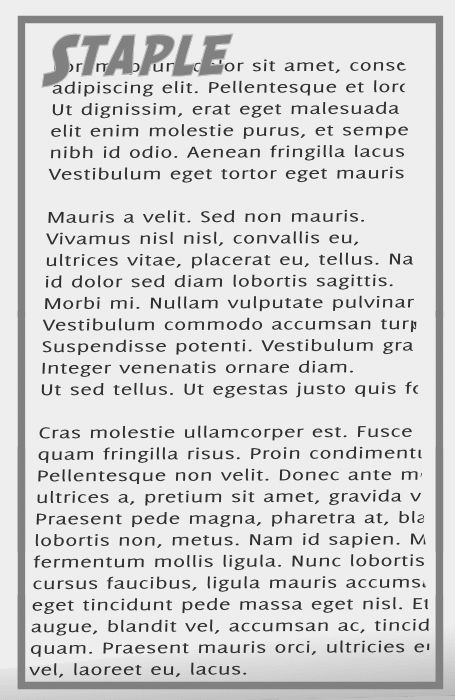 While there’s no definitive word count for online articles, most sites tend to favor the 800-1500 range. However, if you’re looking to create a more comprehensive piece without overwhelming your readers, a medium-length staple post might be just what you need. With approximately 1250-2200 words, you’ll have enough space to convey your message clearly and effectively in about three pages of standard text. Of course, the key is to focus on quality content and let that dictate the length of your article, rather than an arbitrary word count. So why not try crafting the perfect staple post today?
While there’s no definitive word count for online articles, most sites tend to favor the 800-1500 range. However, if you’re looking to create a more comprehensive piece without overwhelming your readers, a medium-length staple post might be just what you need. With approximately 1250-2200 words, you’ll have enough space to convey your message clearly and effectively in about three pages of standard text. Of course, the key is to focus on quality content and let that dictate the length of your article, rather than an arbitrary word count. So why not try crafting the perfect staple post today?
Long-Form Blog Post (Pillar Post) (2500 Words +)
A Long-Form Blog Post, also known as a Pillar Post, is a comprehensive article that contains 2500 or more words, equivalent to about seven pages of text. While this length may seem daunting, it allows for an in-depth exploration of most topics and is a rule worth following. However, quantity should not outweigh quality, and the content should always provide value to the reader. Organize the article in a way that ensures all aspects tie together cohesively, in line with the overall theme. If the content is informative, engaging, and valuable, readers will be compelled to consume what you have to offer. With a well-crafted Pillar Post, you can establish yourself as a thought leader and provide lasting value to your audience.
Balancing SEO and User-Friendly Content Writing
When it comes to creating content for your website, it’s important to understand that writing for SEO doesn’t mean writing solely for search engine algorithms. Instead, it’s about creating content that appeals to both search engines and your target audience.
Search engine algorithms use complex ranking systems, such as Domain Rating (DR) and Page Rating (PR), to determine a website’s credibility and rank it accordingly. When targeting specific keywords, it’s important to be aware of your own website’s DR and PR, as well as your competition’s.
If your website’s DR is significantly lower than your competition’s, it may be difficult to outrank them without drastic measures. However, if your DR and your competition’s DR are close, it’s more about optimizing your content for search engines while also providing valuable information to your audience.
In this scenario, it’s important to focus on elements such as word count, keyword density, user readability, content quality, and multimedia (e.g. videos). Research your competitors’ content and aim to exceed their word count by at least 20%, while ensuring your article covers all key points of Google’s top 10 search results for the targeted keyword.
But, while it’s important to optimize your content for SEO, it’s equally important to create content that is user-friendly and engaging. Keyword stuffing and unnatural language can harm your website’s credibility and discourage readers from returning. Instead, aim for a balance between optimizing for search engines and creating high-quality content that will keep your readers coming back for more.
Writing for SEO involves finding a balance between optimizing for search engines and creating user-friendly content. Take into account your website’s DR and PR, as well as your competition’s, and aim to exceed their word count and content quality. But always remember that your content should be created with your target audience in mind, using natural language and providing value to your readers.
Blog Post Conclusion
In conclusion, writing articles can be a challenging but rewarding task. There are many different types of articles to choose from, each with its own unique style and purpose. Understanding the different types of articles and their respective formats is key to producing high-quality content that engages your readers and achieves your desired goals, whether it’s to educate, entertain, or persuade.
Remember to always consider your target audience and tailor your writing to their interests and needs. Conduct thorough research and use reliable sources to ensure the accuracy of your content. And don’t forget the importance of optimizing your articles for search engines through the strategic use of keywords, meta descriptions, and other SEO techniques.
Ultimately, the key to success in article writing is to keep practicing and refining your skills. With dedication and hard work, you can become a skilled writer capable of producing compelling and effective content that captures the attention of your audience and achieves your goals.

